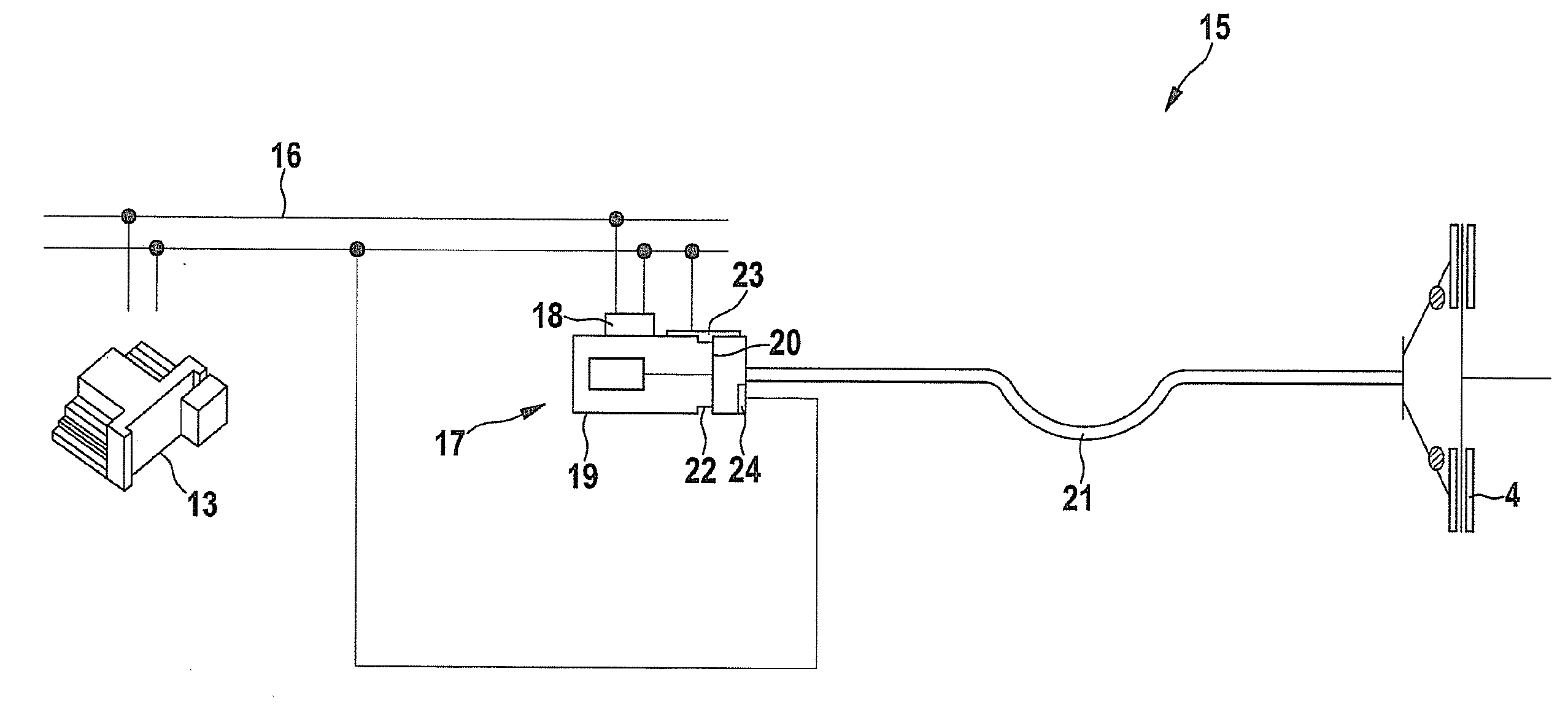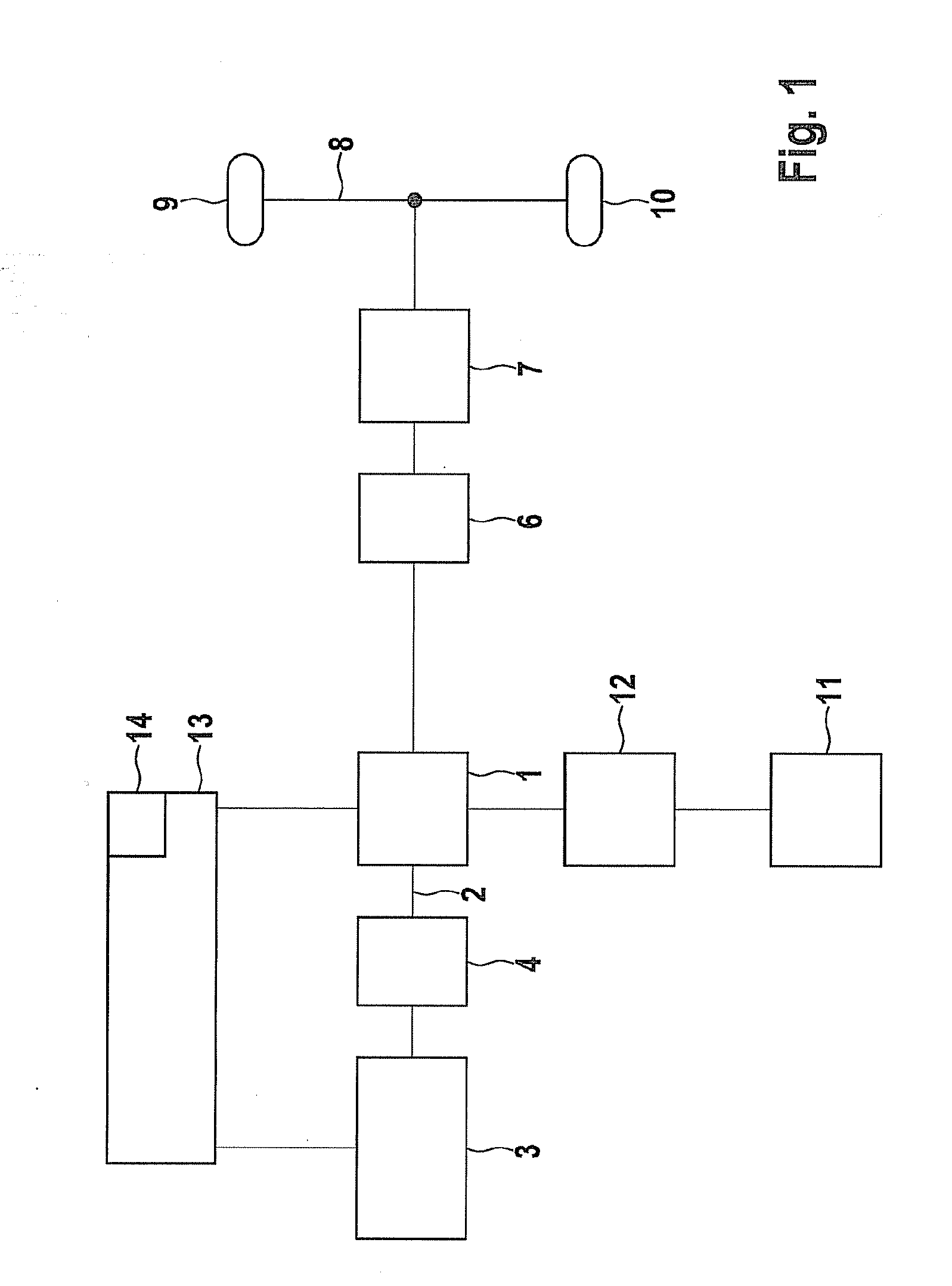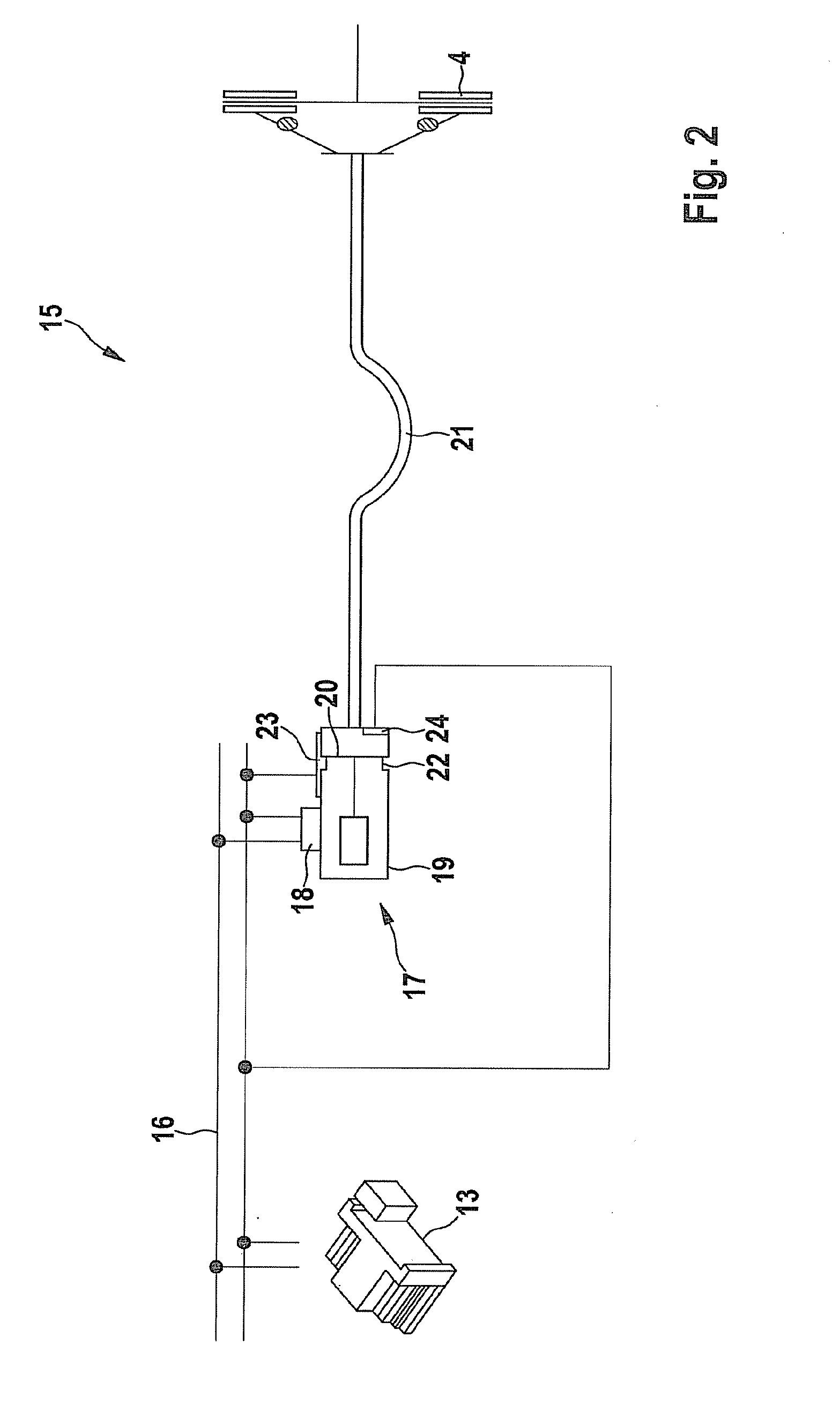Method and device for leak testing in an automated electrohydraulic clutch system in a motor vehicle
a technology of electrohydraulic clutch and leak detection, which is applied in the direction of fluid-tightness measurement, instrumentation, and measurement of fluid loss/gain rate, can solve the problems of incorrect setting of clutch travel for opening and closing, prolonging etc., to prevent inadequate torque setting, rapid and reliable detection, and prolong the service life of the clutch
- Summary
- Abstract
- Description
- Claims
- Application Information
AI Technical Summary
Benefits of technology
Problems solved by technology
Method used
Image
Examples
Embodiment Construction
[0028]FIG. 1 shows a hybrid vehicle configured as a parallel hybrid. In this embodiment, an electric motor 1 is situated on drive shaft 2 of an internal combustion engine 3. Combustion engine 3 is connected to electric motor 1 by a separating clutch 4. Electric motor 1 leads to a power take-up element 6, which is connected to a transmission 7. Transmission 7 leads to an axle 8, on which the wheels 9, 10 are situated that are driven by the described power train.
[0029]Electric motor 1 is powered by a high-voltage battery 11, which is connected to electric motor 1 via an inverter 12. Electric motor 1 and combustion engine 3 are controlled by a control unit 13. Control unit 13 includes a memory 14, in which characteristic curves for different operating parameters are stored.
[0030]There are various operating modes, in which a parallel hybrid may be operated. A first operating mode, in which separating clutch 4 is open and combustion engine 3 is disconnected from the power train and autom...
PUM
 Login to View More
Login to View More Abstract
Description
Claims
Application Information
 Login to View More
Login to View More - R&D
- Intellectual Property
- Life Sciences
- Materials
- Tech Scout
- Unparalleled Data Quality
- Higher Quality Content
- 60% Fewer Hallucinations
Browse by: Latest US Patents, China's latest patents, Technical Efficacy Thesaurus, Application Domain, Technology Topic, Popular Technical Reports.
© 2025 PatSnap. All rights reserved.Legal|Privacy policy|Modern Slavery Act Transparency Statement|Sitemap|About US| Contact US: help@patsnap.com



